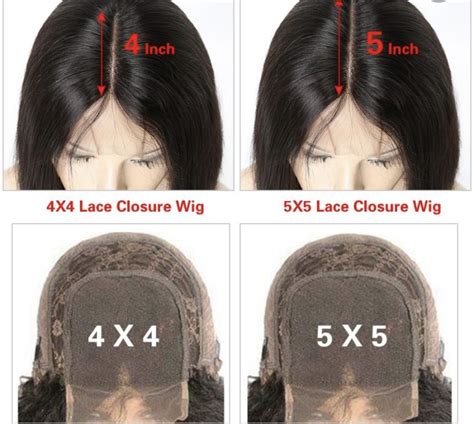Lace front wigs are a popular choice for those looking to achieve a natural-looking, glamorous look. But with so many different types of lace front wigs on the market, it can be difficult to know which one is right for you. In this article, we’ll take a closer look at closure vs. frontal lace front wigs, and help you decide which one is the best fit for your needs.

What is a Closure?
A closure is a small piece of lace that is used to cover the top of the head. It is typically made of Swiss lace or French lace, and it is hand-tied to match the texture and density of your natural hair. Closures come in a variety of sizes and shapes, so you can find one that fits your head perfectly.
What is a Frontal?
A frontal is a larger piece of lace that covers the entire front of the head, from ear to ear. It is also made of Swiss lace or French lace, and it is hand-tied to match the texture and density of your natural hair. Frontals are more expensive than closures, but they offer a more natural-looking finish.
Closure vs. Frontal: Which One is Right for You?
The best way to decide which type of lace front wig is right for you is to consider your own unique needs and preferences. Here are a few things to think about:
- Budget: Closures are more affordable than frontals, so they are a good option for those on a budget.
- Installation: Closures are easier to install than frontals, so they are a good option for beginners.
- Naturalness: Frontals offer a more natural-looking finish than closures, so they are a good option for those who want to achieve a seamless look.
- Durability: Frontals are more durable than closures, so they will last longer.
How to Install a Closure or Frontal
Installing a closure or frontal is a relatively simple process that can be done at home. Here are the steps:
- Prepare your hair: Wash and condition your hair, and then blow it dry.
- Apply adhesive: Apply a thin layer of adhesive to the lace of the closure or frontal.
- Place the closure or frontal: Place the closure or frontal on your head, and press it down firmly.
- Style your hair: Style your hair as desired.
Caring for Your Closure or Frontal
To keep your closure or frontal looking its best, it is important to care for it properly. Here are a few tips:
- Wash your hair regularly: Wash your hair every 2-3 days with a gentle shampoo and conditioner.
- Avoid using harsh chemicals: Avoid using harsh chemicals, such as bleach or ammonia, on your closure or frontal.
- Store your closure or frontal properly: When you are not wearing your closure or frontal, store it in a cool, dry place.
Conclusion
Closure vs. frontal lace front wigs are both great options for those looking to achieve a natural-looking, glamorous look. The best way to decide which type of wig is right for you is to consider your own unique needs and preferences. With proper care and maintenance, your closure or frontal will last for many years to come.
| Feature | Closure | Frontal |
|---|---|---|
| Price | More affordable | More expensive |
| Installation | Easier to install | More difficult to install |
| Naturalness | Less natural-looking | More natural-looking |
| Durability | Less durable | More durable |
| Size | Description |
|---|---|
| 4×4 | Small closure that covers the top of the head |
| 6×6 | Medium closure that covers a larger area of the head |
| 8×8 | Large closure that covers the entire top of the head |
| Size | Description |
|---|---|
| 13×4 | Small frontal that covers the front of the head from ear to ear |
| 13×6 | Medium frontal that covers a larger area of the front of the head |
| 13×8 | Large frontal that covers the entire front of the head |
| Type | Description |
|---|---|
| Swiss lace | Thin and delicate lace that is very natural-looking |
| French lace | More durable than Swiss lace, but not as natural-looking |
